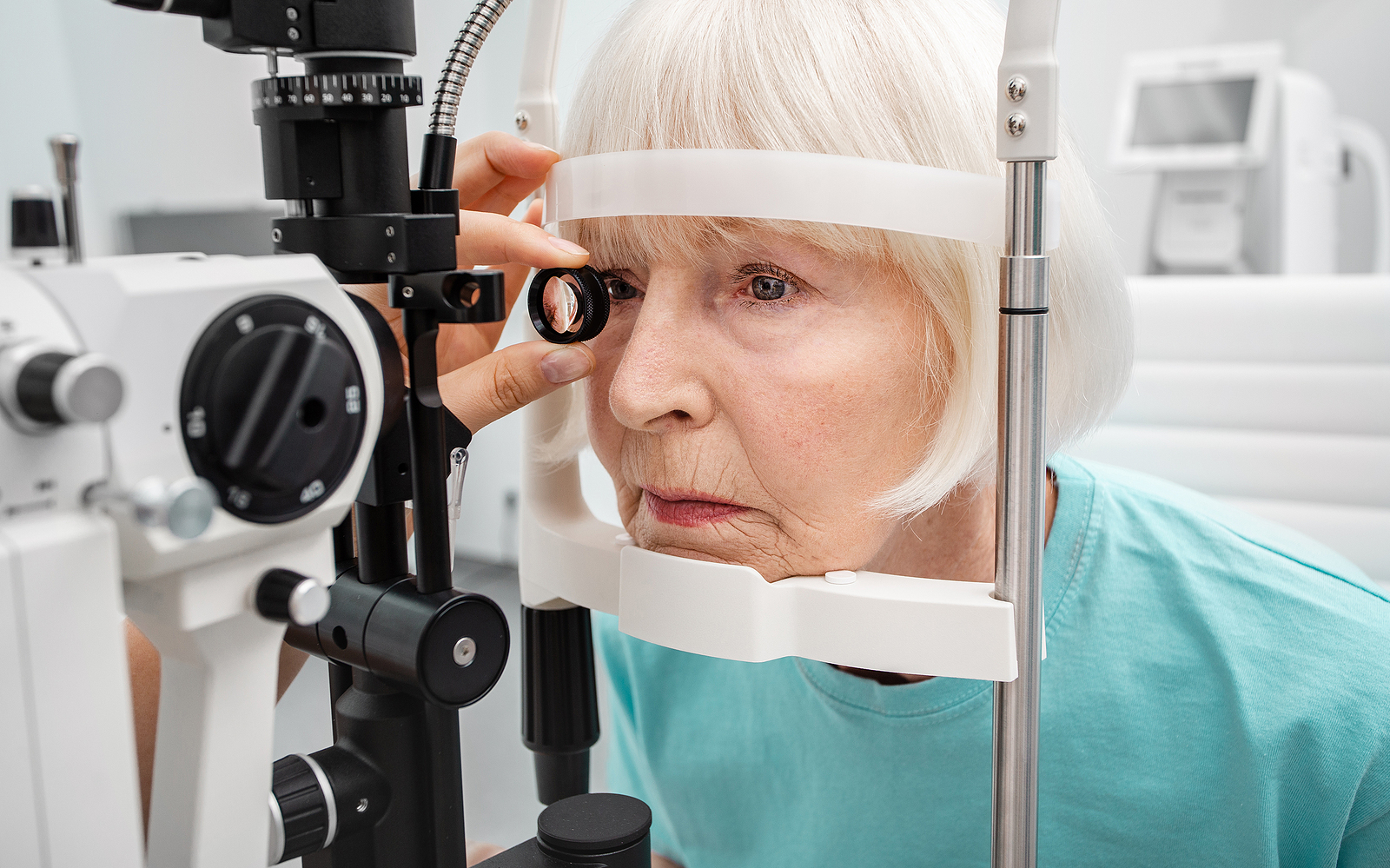Eye Care Series: Treatment of Keratoconus

We conclude our in-depth series on keratoconus with a look at treatment options. Whenever possible, our eye doctors in Mesa and Chandler pursue a non-surgical solution to improve your eye health. However, in the case of keratoconus, your eyes generally become gradually worse. In later stages, surgery may prove the only viable treatment option. If this is the case, our team is going to be with you every step of the way, making sure that you have plenty of guidance as you try to find the decision that is right for you, and supporting in a referral to a corneal specialist if necessary.
What Is Keratoconus?
The clear dome-shaped window of your eye is called the cornea. Under normal circumstances, it focuses light onto the retina to form an image your brain interprets. If you have keratoconus, the dome bulges out, resembling a cone. This causes light rays to become unfocused, distorting visual acuity. In the beginning, it makes reading and driving difficult. Left untreated, it can permanently impair your vision.
The good news is that specialized contact lenses and surgical solutions can improve your vision as keratoconus advances.
Lenses Prescribed for Keratoconus Treatment
Depending on whether you have early, intermediate or advanced keratoconus, there are specialized contact lenses that may provide clearer vision. In the early stages, scleral lenses can often correct distorted images and offer superior vision, comfort and corneal protection. However, you will probably have to change your prescription often.
Rigid, gas-permeable contact lenses, also called hard contact lenses, can improve vision for those with advanced keratoconus. Our eye doctors can prescribe hard lenses that greatly improve your vision. If you find rigid lenses too difficult to wear, we can try piggybacking two lenses, a soft lens beneath a rigid one. Many clients find this method more comfortable than hard lenses alone.
Other lenses for keratoconus treatment include hybrid lenses that contain a soft outer ring with a rigid center. Meanwhile, scleral lenses provide hope and clearer vision for those with advanced keratoconus. These lenses rest on the white part of the eye and form a second dome over the cornea.
When lenses no longer improve your vision or become too difficult to wear, our eye doctors in Mesa and Chandler may suggest surgery.
Corneal Cross Linking
Your eye doctor may also recommend corneal cross-linking to halt the progression of the disease. Corneal cross-linking uses collagen to create stronger bonds, resulting in greater stability. Swagel Wootton Eye Institute can refer you to a provider that offers corneal cross-linking in the Phoenix area.
Other Surgical Treatments
Other surgical solutions recommended for clients when the cornea is too thin and too scarred and traditional vision correction is no longer viable, include corneal transplants that take about an hour. You can typically go home afterwards. The surgeon sews in a donated cornea using tiny stitches much smaller than a strand of hair.
There are two main types of corneal transplants:
- Penetrating keratoplasty (full thickness) may help you if you have a thin or scarred cornea. In this full-cornea transplant, the surgeon replaces the entire central portion of the eye with donor tissue.
- Deep anterior lamellar keratoplasty (DALK) leaves behind the inner corneal lining, called the endothelium. This may help avoid tissue rejection.
Contact Swagel Wootton for a Consultation
Keratoconus treatment includes nonsurgical and surgical solutions. Consulting with the best eye doctors in Mesa and Chandler can give you a clear picture of your options. Swagel Wootton Eye Institute is committed to helping each patient make informed decisions about their eye health.
In addition to keratoconus treatment, we specialize in cataract and LASIK surgery in Mesa and Chandler. Contact us today to set up an appointment for yourself or a loved one.
[DISPLAY_ULTIMATE_SOCIAL_ICONS]









